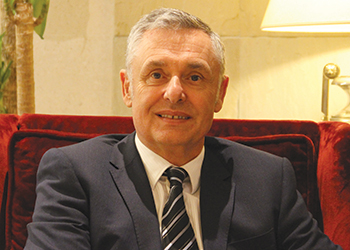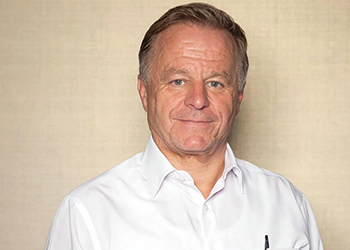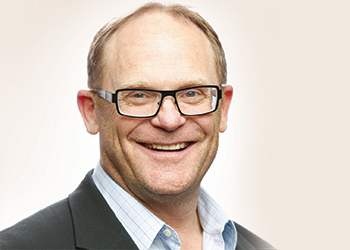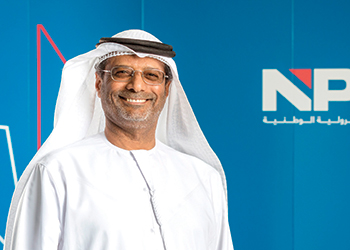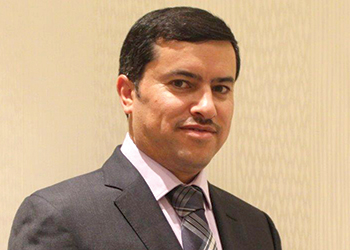
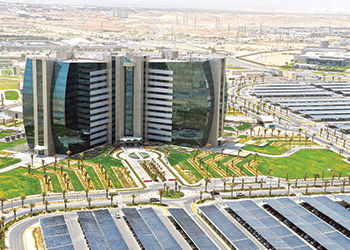 Saudi Aramco ... at the heart of the reform agenda
Saudi Aramco ... at the heart of the reform agenda
Saudi Vision 2030 not only seeks to reorient the economy away from oil, but also to create a more engaged and open society. These social aspects go hand in hand with the economic reform agenda and aim to create a productive society
Saudi Arabia is earnestly implementing the kingdom’s boldest, most innovative, and farthest-reaching modernisation and development plan in the country’s history, the Saudi Arabia Vision 2030.
It addresses the near, mid-term, and longer-term needs and challenges that strategists believe the country is likely to face in the next 13 years. Conceptualised and approved by the country’s leaders, the plan reflects an extraordinary degree of extended research, analysis, and assessment.
It was aided throughout by the input and comment of some of the world’s most renowned and experienced advisors in forward planning, focus, messaging, and communication. The process was launched in 2015 soon after Custodian of the Two Holy Mosques HRH King Salman bin Abdulaziz Al Sa’ud appointed his son, HRH Prince Mohammed bin Salman, as Deputy Crown Prince and Minister of Defence.
According to a study by Oxford Strategic Consulting, Control Risks and Oxford Economics, as much as $1 trillion in foreign direct investment could flow into Saudi Arabia over the coming 15 years, as the oil-rich nation seeks to diversify its economy and boost its private sector.
According to the UK-based consulting firm, “The kingdom is at a critical juncture: its economic model is no longer sustainable in a world of depressed oil prices, and there is a youthful, connected population entering the workforce and eager to integrate with the outside world.”
Among the targets Saudi Arabia has set is to boost its GDP growth and double it by 2030, creating up to 6 million new jobs in the process. Better management of its human resources could unleash as much as $6.44 billion in economic output for the country, the study expects.
Another aim is to boost foreign direct investment so that it contributes as much as 5.7 per cent to GDP, up from the current 3.8 per cent. This would call for 21 per cent growth in foreign direct investment into the country, taking it to $1 trillion in the next 15 years. To this end, Saudi Arabia is looking to do away with its bureaucratic orientation, make it possible for foreigners to invest in more of the country’s economic sectors, and also do over its regulations.
 |
Prince Mohammed ... ambitious plans |
Also, while the country’s private sector output currently makes up 40 per cent of its GDP, Saudi Arabia is looking to raise this to a 65 per cent stake by 2030. Oxford Strategic Consulting expects that the country would have to boost growth in its private sector by 5 percentage points a year to achieve this goal. Saudi Arabia is looking to promote its small and medium business sector, so that 2.5 million more Saudi Arabian workers are employed in these enterprises, taking the total to 4.1 million workers by 2030, to aid private sector growth.
And the country is also aiming to diversify its oil-dominated export base and increase its non-hydrocarbon exports by an average of 22 per cent a year, so that they grow twentyfold by 2030.
Graham Griffiths, a Control Risks analyst, says: “Saudi Arabia is embarking on a radical transition that promises to open up many economic opportunities for investors. However, the kingdom will remain a challenging environment to work in, as the traditional way of doing business – both within the government and in the private sector – meets the new economic model. Informed analysis of the rapidly changing political, economic and social landscape in the kingdom will be vital to seizing the opportunities presented by Saudi Vision 2030.”
Vision 2030 is a sweeping reform agenda. It not only seeks to reorient the economy away from oil, but also to create a more engaged and open society. These social aspects go hand in hand with the economic reform agenda and aim to create a productive society that will support economic growth.
Investors looking to capitalise on these opportunities require a nuanced understanding of how the country’s business environment is changing. Businesses need to understand the government’s plans for the sectors in which they operate, as well as the government’s ability to deliver on its reform promises. They also need to continue to monitor the fiscal and social pressures the government is facing, as these will be primary factors shaping the government’s resolve to follow through on these fundamental reforms.
'Informed analysis of the rapidly changing political, economic and social landscape in the kingdom will be vital to seizing the opportunities presented by Saudi Vision 2030,' says Griffith.
 |
|
A shift to renewables is very much part of the Vision strategy |
A productivity-led economic transformation could enable Saudi Arabia to double its GDP and create as many as six million new jobs by 2030. Better human resources can also help the country boost GDP. Oxford Strategic Consulting’s ‘Human Resources Management in the GCC’ research report with Aramco found that effective HR could add $14 billion per year to the GDP of the Gulf Cooperation Council states. Given Saudi Arabia’s contribution to the bloc’s total GDP, Oxford Strategic Consulting estimates that better HR has the potential to generate approximately $6.44 billion in GDP for the country.
The vision also aims to increase inward FDI’s contribution to GDP from 3.8 per cent to 5.7 per cent and this would require an inward FDI average growth of 21 per cent per year (in nominal terms), resulting in cumulative inward FDI of up to $1 trillion over the next fifteen years. To attract foreign investment the government is seeking to create a more investment-friendly environment by eliminating bureaucratic red-tape, opening up additional sectors of the economy to foreign investors and revamping regulation.
The private sector currently contributes 40 per cent to GDP, but officials hope to increase this to 65 per cent by 2030. Meeting this target requires stronger private sector annual GDP growth by five percentage points per year versus baseline growth. This would grow the private sector on average by 13 per cent per year (in nominal terms), resulting in private sector GDP growing by a factor of six in just fifteen years.
To spur private sector growth, the government is taking steps to support SMEs and provide stimulus funds for the private sector. The country’s private sector will welcome this support, as it needs to employ a total of 4.1 million nationals by 2030 – a rise of 2.5 million compared with current levels.
Even as the vision looks set to unlock numerous opportunities, its implementation will face challenges. For both foreign and local firms, taking advantage of and maximising these opportunities will require solid knowledge of the local market dynamics, reform agendas and human capital considerations.
The Council of Economic Affairs and Development has identified 10 programmes of strategic importance for the government to achieve Saudi Vision 2030, which was approved by the Council of Ministers in April 2016.
The 10 new programmes will implement specialised plans in housing, improving the lifestyle of Saudis and residents, serving pilgrims and other programmes that support national leadership in industry and financial markets. The new plans will also strengthen national identity and bolster Saudi culture, arts and entertainment. It will be operational as soon as the plans are completed during the third quarter of 2017.
These programmes are extensions of the original plans approved in the National Transformation Programme 2020 and launched last June, and under the Financial Balancing Programme 2020, which was launched last December. Their mechanisms were formulated in accordance with the vision’s governance, which was approved in May 2016.
The programmes were developed to strengthen the objectives of Saudi Vision 2030 in making the kingdom’s economy more prosperous and its society more vibrant, adhering to Islamic values and the well-established national identity.
The programmes represent the system of achieving the vision. The council will monitor its implementation until 2020. The council will follow the approved governance that ensures accountability, transparency and continuous monitoring.
Meanwhile, Saudi Arabia has expressed absolute confidence in its ability to advance towards more privatisation projects in coincidence with a statement made by a high-ranking official that the kingdom expects raising around $200 billion during the coming years through selling assets in governmental institutions in various sectors.
In this regard, finance and economy expert Suleiman Assaf says that Saudi Arabia will succeed in implementing more privatisation projects in the future. Saudi Vision 2030 has determined the contours of the economy and reshaped it all over again. The effect of privatisation projects success will be visible soon and this is attributed to the ambitious vision of the country.'
Vice Minister for Economy and Planning Mohammed Al-Tuwaijri says that the kingdom eyes around $200 billion through selling assets — he added that the number was based on detailed studies of valuations and market demand since authorities announced plans for a privatisation drive one year ago.
'This year we have a crystal clear idea on market demand size, valuation, and financial advisers. The market appetite locally and globally, cash flow certainty, government off-takes and structure were all studied,' he says.
Tuwaijri sees that the revenues’ plan would transform the Saudi economy by putting large parts in private hands, while helping to repair state finances that have been severely hurt by low oil prices.
The $200 billion figure did not include tens of billions of dollars which the government expects to raise next year when it offers up to 5 per cent of national oil firm Saudi Aramco. Enterprises in 16 sectors are expected to be fully or partly privatised by 2020, he adds.
Among the first assets to be offered will be King Faisal Specialist Hospital and Research Centre in Riyadh. 'We are in a very advanced stage – appetite has been secured, the model is being made by relevant government authorities,' Tuwaijri states.
Policymakers in Riyadh are also continuing to look for ways to cut spending in a bid to offset the impact of lower oil prices on the biggest Arab economy. Reform and austerity are the buzzwords in the kingdom, which has restructured its subsidy model to save billions of dollars annually, slashed salaries of ministers and curbed perks of some of the government sector employees, as it tries to bridge its fiscal gap.










































































